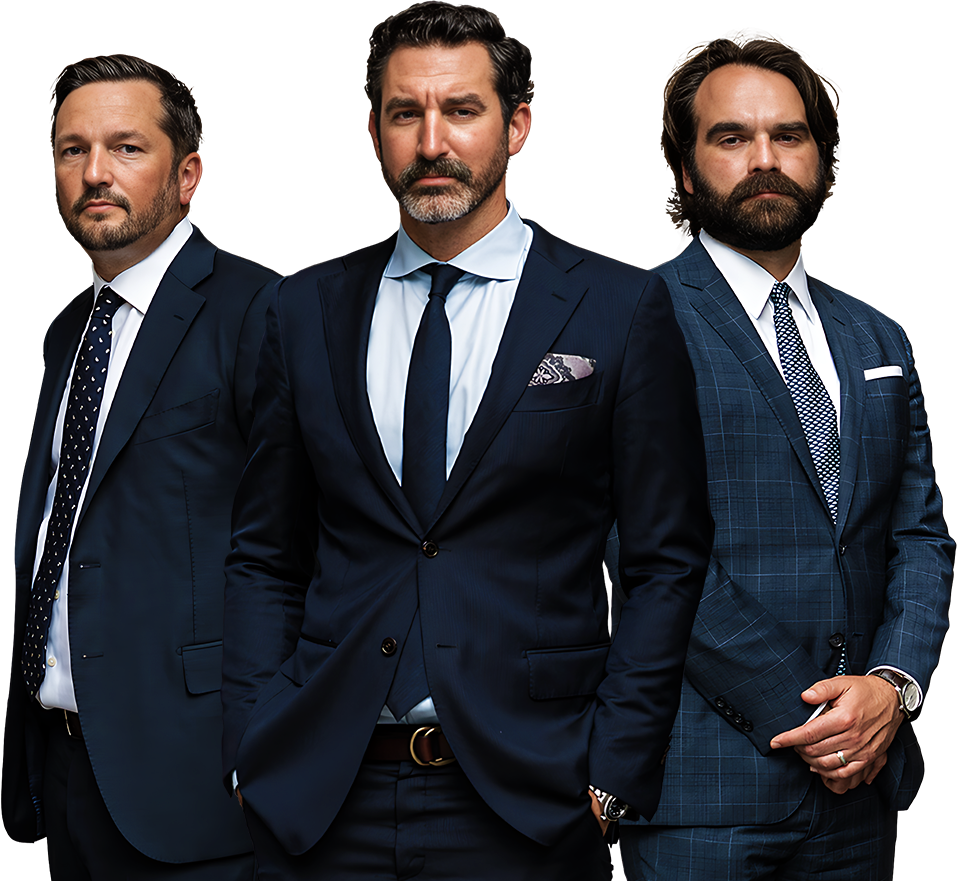Introduction
There were no signs of slowing down. It’s already been three hours since we started this road trip, and my body’s starting to feel heavy. I glance at my watch, 11:30 pm, and my eyes dart back to the road. Nearly half of the trip is done, I think to myself. Just as I’m about to close my eyes for a mere moment, the bright headlights of an 18-wheeler hauling down the highway wake me up. Then, everything went black.
A three-car accident can be a frightening and confusing experience. It can be hard to know what to do or who to turn to. You may be injured, your car may be damaged, and you may be feeling overwhelmed. This article will provide you with some information on what to do after a three-car accident. We will cover everything from exchanging information to filing a claim.
What to Do After a Three-Car Accident
The first thing you should do after a three-car accident is to check for injuries. If you or anyone else is injured, call 911 immediately. Once you have checked for injuries, you should move your car to a safe location. If possible, pull over to the side of the road. If you are unable to move your car, stay inside and wait for help to arrive.
Once you are in a safe location, you should exchange information with the other drivers involved in the accident. This information includes your name, address, phone number, insurance information, and license plate number. You should also take pictures of the accident scene and any damage to your car.
After you have exchanged information, you should file a police report. The police report will help to document the accident and provide you with a record of what happened. You can file a police report online or at the local police station.
Once you have filed a police report, you should contact your insurance company. Your insurance company will help you to file a claim and get your car repaired or replaced. You may also be able to get compensation for your injuries.
Conclusion
Being involved in a three-car accident can be a stressful and overwhelming experience. However, by following the steps outlined in this article, you can help to protect yourself and your rights.
Three-Car Accident: What to Do and How to Handle the Aftermath
In the aftermath of a three-car accident, it’s crucial to stay calm and know what steps to take. On a busy highway, a three-car pileup can turn a seemingly ordinary day into a nightmare. When multiple vehicles are involved, the scene can be chaotic, and it’s easy to feel overwhelmed. However, by following these steps, you can help ensure your safety and protect your rights.
What to Do After a Three-Car Accident
1. Ensure Safety
First and foremost, check for injuries and ensure everyone involved in the accident is safe. If possible, move your car to the side of the road to avoid further accidents. Turn on your hazard lights to alert other drivers.
2. Call 911
Even if the accident seems minor, call 911 immediately. Law enforcement will create an official report, which is essential for insurance claims and legal purposes. The police can also direct traffic and ensure the safety of everyone involved. Remember, it’s always better to be safe than sorry.
3. Gather Information
If you’re able, exchange information with the other drivers involved. Get their names, contact information, insurance details, and license plate numbers. Take pictures of the accident scene, including the damage to all vehicles involved. These details will be invaluable when filing insurance claims.
4. Seek Medical Attention
Don’t ignore any injuries, no matter how minor they seem. Some injuries may not be immediately apparent, so it’s important to be checked by a healthcare professional. Seeking medical attention promptly will also help document your injuries for insurance purposes.
5. Contact Your Insurance Company
Inform your insurance company about the accident as soon as possible. They will guide you through the claims process and help you understand your coverage. Be honest and accurate when providing details about the accident.
Accidents, Accidents, Accidents: What You Should Do When Three Cars Collide
When your car is one of three in an accident, it’s a nightmare—and the potential for confusion and finger-pointing is greatly multiplied. While you’re likely feeling shaken and overwhelmed—both emotionally and physically—you need to be focused and deliberate in the aftermath.
The most important thing to remember is to remain calm and collected. The calmer your demeanor, the more likely you are to make the right decisions and avoid making the situation worse. Follow these steps to protect yourself, your passengers, and your right to compensation.
Safety First
After any accident, you need to make sure everyone involved is safe. If you’re able, check on the other drivers and passengers. If anyone is injured, call 911 immediately. If possible, move the cars to the side of the road so you don’t block traffic.
Document The Crash
Once everyone is safe, it’s important to document the accident as thoroughly as possible. Take pictures of the damage to all three cars, including any visible injuries. Get the names and contact information of the other drivers and any witnesses. If there are any traffic cameras in the area, try to get the footage.
File A Police Report
In most cases, you will need to file a police report after a three-car accident. The police will investigate the accident and determine who was at fault. This report will be essential for your insurance claim.
How To File A Claim After A Three-Car Accident
Dealing with insurance companies can be daunting, but the first, most important step is to act quickly. Every insurance company sets a time limit for reporting claims, and it’s generally a good idea to report your claim as soon as possible—if you wait too long, you may lose your right to compensation.
Once you report your claim, the insurance company will assign you an adjuster. This adjuster will investigate the accident and determine how much your claim is worth. If the adjuster denies your claim or offers you a settlement that you’re not satisfied with, you can appeal the decision.
Filing a claim after a three-car accident can be complex and time-consuming, but if you follow these steps, you can increase your chances of getting a fair settlement.
3 Tips For Dealing With Insurance Companies
Here are three tips to keep in mind when dealing with insurance companies after a three-car accident:
- Document everything. Keep a record of all communications with the insurance company, including phone calls, emails, and letters. This will help you if you need to appeal the decision.
- Don’t sign anything. Never sign anything from the insurance company until you have had a chance to review it with your attorney.
- Don’t accept the first offer. Insurance companies often make lowball offers in the hopes that you will accept them without question. Don’t be afraid to negotiate for a fair settlement.
Who’s At Fault in a Three-Car Accident?
Imagine you’re driving down the road when suddenly, out of nowhere, you’re involved in a three-car accident. It’s a chaotic scene, with metal crunching, glass shattering, and people disoriented. In the aftermath, you’re left wondering how it all happened and who’s to blame.
Determining fault in a three-car accident can be like trying to unscramble a scrambled egg; it’s messy and complicated. There are multiple vehicles, multiple drivers, and multiple perspectives to consider. And let’s not forget the insurance companies, who will be eager to point fingers and avoid paying out claims.
That’s why it’s crucial to seek legal advice if you’re involved in a three-car accident. An attorney can help you navigate the complexities of the legal system, gather evidence, and build a strong case on your behalf.
Applicable Laws and Regulations
When it comes to determining fault in a three-car accident, there are a few key laws and regulations that come into play. These laws vary from state to state, but they generally cover:
- Negligence: Negligence is the failure to exercise reasonable care, which results in injury or damage to another person. In a car accident case, negligence can be proven by showing that the driver failed to obey traffic laws, was driving recklessly, or was otherwise careless.
- Comparative negligence: Comparative negligence laws allow courts to assign a percentage of fault to each driver involved in an accident. For example, if one driver is found to be 70% at fault and the other driver is found to be 30% at fault, the first driver will be responsible for 70% of the damages.
- No-fault insurance: No-fault insurance laws require drivers to file claims with their own insurance companies, regardless of who is at fault for the accident. This can simplify the claims process, but it can also limit the amount of compensation that victims can recover.
Factors that Determine Fault
In addition to the laws and regulations mentioned above, there are a number of other factors that can be used to determine fault in a three-car accident. These factors include:
- The police report: The police report is an important document that can provide valuable information about the accident, including the location, time, and circumstances of the crash. The officer who wrote the report may also have interviewed witnesses and taken measurements at the scene.
- Witness statements: Witness statements can provide additional insights into the accident. Witnesses may have seen what happened leading up to the crash, or they may have seen the crash itself. Their testimony can be helpful in determining who is at fault.
- Physical evidence: Physical evidence, such as skid marks, damage to the vehicles, and debris from the accident, can also be used to determine fault. This evidence can help to reconstruct the events of the crash and determine who was responsible.
- Expert testimony: In some cases, it may be necessary to hire an expert witness to testify about the accident. Experts can provide specialized knowledge and insights that can help the court to understand the technical aspects of the case.
Common Causes of Three-Car Accidents
Three-car accidents can be caused by a variety of factors, including:
- Rear-end collisions: Rear-end collisions are the most common type of three-car accident. They occur when one car rear-ends another car, which then rear-ends a third car. Rear-end collisions are often caused by distracted driving, following too closely, or speeding.
- Sideswipe collisions: Sideswipe collisions occur when two cars traveling in opposite directions collide. They are often caused by one driver failing to yield the right-of-way or by one driver drifting into the other lane.
- T-bone collisions: T-bone collisions occur when one car is struck perpendicularly by another car. They are often caused by one driver running a red light or stop sign.
Conclusion
Determining fault in a three-car accident can be a complex and challenging process. There are a number of factors that need to be considered, including the laws and regulations of the state where the accident occurred, the physical evidence from the scene, and the testimony of witnesses and experts. If you have been involved in a three-car accident, it is important to speak to an attorney to discuss your rights and options.
Multi-Vehicle Mayhem: A Guide to Handling Three-Car Crashes
In the chaotic tapestry of our daily commute, multi-car collisions are like rogue comets hurtling through the orderly flow of traffic. They leave behind a trail of shattered glass, dented metal, and, all too often, human suffering. If you find yourself caught in this automotive quagmire, it’s crucial to know how to navigate the aftermath with both physical and legal savvy.
The Immediate Aftermath
Adrenaline coursing through your veins, you emerge from the wreckage. Amidst the surreal cacophony, stay calm and prioritize your safety. Move your vehicle to the side of the road if possible, and turn on your hazard lights. Check for any injuries and call for emergency medical services if necessary. Remember, even minor bumps can mask serious trauma, so don’t dismiss any discomfort.
Documenting the Scene
As the shock subsides, gather as much evidence as you can. Take photos of the accident scene, including the vehicles involved and any visible injuries. Exchange contact and insurance information with the other drivers. If there are any witnesses, get their names and contact details. These records will be invaluable for insurance claims and legal proceedings.
Seeking Medical Attention
Even if you feel relatively unscathed, it’s imperative to seek medical attention as soon as possible. Some injuries, such as concussions or internal bleeding, may not manifest immediately. A thorough examination will rule out any hidden dangers and provide you with the necessary documentation for your insurance claim.
Navigating the Legal Landscape
Dealing with insurance companies and legal matters can be a daunting task. Consider consulting with an experienced attorney who specializes in accident law. They can guide you through the legal labyrinth, help you determine liability, and fight for your rights to compensation. Remember, you may be entitled to recover damages for medical expenses, lost wages, pain and suffering, and property damage.




Leave a Reply